Carlos Vera
Interview by Jessica Lipsky | Photos by Eilon Paz
arlos Vera, a.k.a DJ Turmix, has always been interested in mashups. From his early days spinning breakbeats, house and acid jazz in Spanish clubs, to sharing the stage with Latin soul and boogaloo legends in New York, sonic combination has been his jam.
Born outside of Barcelona in the mid ‘70s, Vera had four siblings with distinct musical taste and he sampled liberally from each. Funk soundtracks, breakbeats, pop music and flamenco were all popular with various members of his family. At 13 he started working at a local radio station, learned how to spin records and began collecting. Over the years, he would accumulate massive amounts of club tunes to spin at raves and bars, each genre leading down another rabbit hole of musical intrigue. More than a decade into Vera’s career as a professional DJ, he developed an affinity for the sounds of late ’60s New York City and became a leading expert in boogaloo—the hybridization of cultures and sounds that rocketed out of El Barrio.
After decades of DJing and collecting records, Vera met an American woman and left his native Spain for Manhattan. He had to pare down his records significantly, keeping only what would hit on the dancefloor and a handful of sentimental albums. Thirty years after Vera bought his first record, it’s easy to identify a common throughline in his collecting: combination and deconstruction. Electronic music, distilled funk, and other sounds, boogaloo melded traditional Latin rhythms with pop and R&B; rumba Catalan remixed Cuban sounds with a distinct Spanish flair.
I went to Vera’s Upper West Side apartment—one of the tidiest I’ve ever seen for a collector–to talk about the sounds of the ’60s, find out what was spinning during Barcelona’s golden clubbing years, and how to stay up for 17 hours straight DJing.
What’s your background and how did you start DJing?
The first time I touched turntables was at my older brother’s house, he was a DJ and started in the late ’70s, early ’80s. In 1982 he had two turntables and a mixer. When he went to work, I went to his bedroom and touched the records without his permission.
I started to feel like I wanted to be a DJ after I saw on MTV videos of Bomb The Bass, the UK producer who made “Beat Dis,” one of the first breakbeat records. It was a clash of sounds, a lot of samples. I remember the video clip was him playing under the stairs of this very little club with all this smoke.
At the same radio station where my older brother was working, on Saturday mornings they had a radio show for kids. So I presented myself and they gave me from 9-10 in the morning. The late ’80s were the years of the acid house explosion and the raves. That’s what my older brother spun and I started to play acid house music for kids. This is how I started everything. At the radio station I met all the other DJs and the people, which is how I got all these influences. I was 13 years old.
We also had a pirate radio station in Barcelona called Radio Point 9. I remember on Saturday nights between 6 and 9 p.m. there was a DJ from Chicago playing Chicago sounds. This was in 1987. Saturday nights in Studio 54 Barcelona featured legendary DJ Raul Orellana and they made live DJ sets. And kids like me, they’d go to the club.
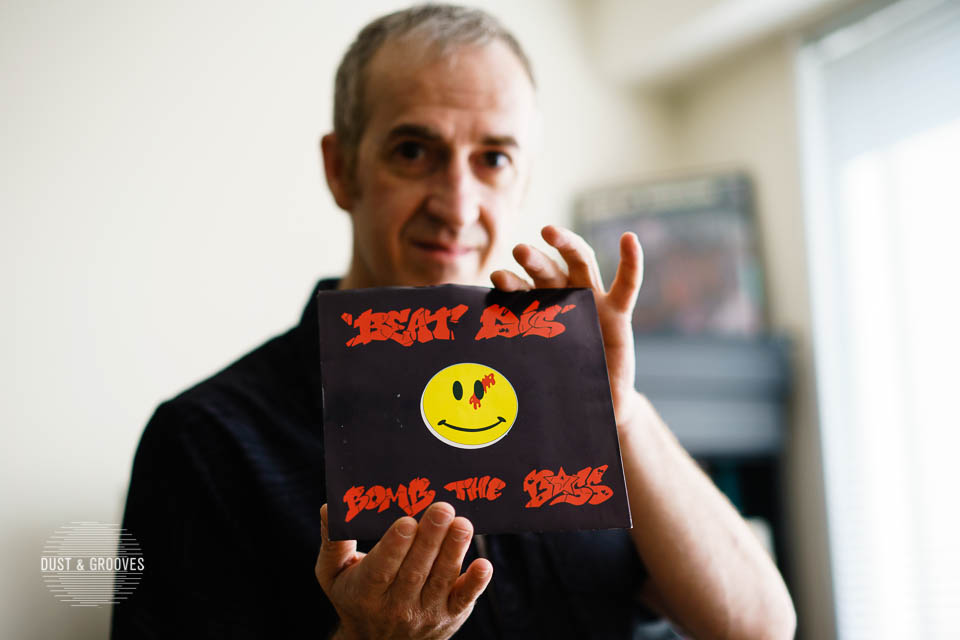 Bomb the Bass – “Beat Dis” – In 1988 at age 14, Carlos heard the heavy breaks of Bomb the Bass on MTV and decided he wanted to be a DJ.
Bomb the Bass – “Beat Dis” – In 1988 at age 14, Carlos heard the heavy breaks of Bomb the Bass on MTV and decided he wanted to be a DJ.
When did you start collecting records?
Another of my older brothers was a breaker, so he did competitions and I remember he had a huge boom box with two tapes. In those years in Spain, these things called mega mixes were very popular. It was one way to put a lot of hits on a six, seven minute track. I started to collect that, buying the tapes in the bars and everywhere. This influenced me lot.
I grew up freak recording tapes all the time until I started working at the radio station and touching real turntables without pitch.
Then I started working with my uncle who repaired washing machines and refrigerators. My first salary was maybe $40. The first thing I did was go to the record shop and bought The Todd Terry Project, a house classic record.
 Todd Terry Project – “Weekend” One of the pioneers of deep house, this 12” Todd Terry single was likely one of the albums Carlos spun at raves and clubs in Barcelona.
Todd Terry Project – “Weekend” One of the pioneers of deep house, this 12” Todd Terry single was likely one of the albums Carlos spun at raves and clubs in Barcelona.
What kind of music was playing in your house growing up? Did your parents have records?
We also had a lot of records in my house because we are five siblings and everyone listened to a different kind of music. We also had a little pickup turntable from the ’60s, from my mother. My mother listened to some flamenco, some salsa. My father was addicted to ranchera tapes.
Peret was one of the artists I grew up listening to, those were my mother’s records. Many people listened to this music in Spain because it was catalan rumba – a hybrid of flamenco & afrocuban with modern sounds like soul and funk. It is very similar to the story of Latin boogaloo, actually.
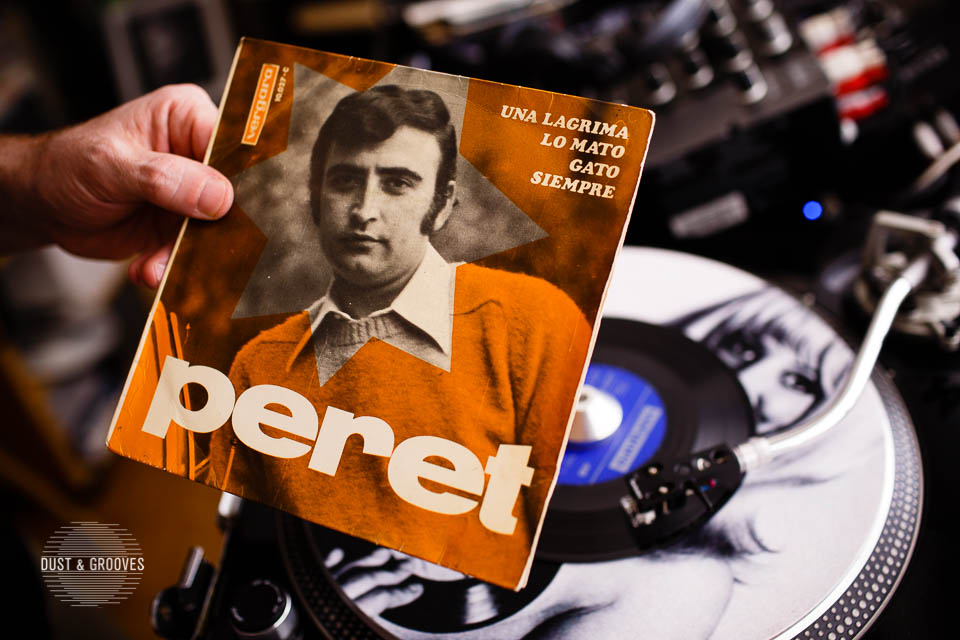 Peret – Peret (1967)
Peret – Peret (1967)
My other brother listened to The Police, reggae, some rock, a lot of British influence. My other older brother started listening to breakbeat, my brother who did breakdancing listened to old school rap and electro from the ’80s, later he became more heavy so I started to listen to all that shit. My sister would listen to more pop. Every one of my brothers bought 45s because in Spain, it was more popular than the album.
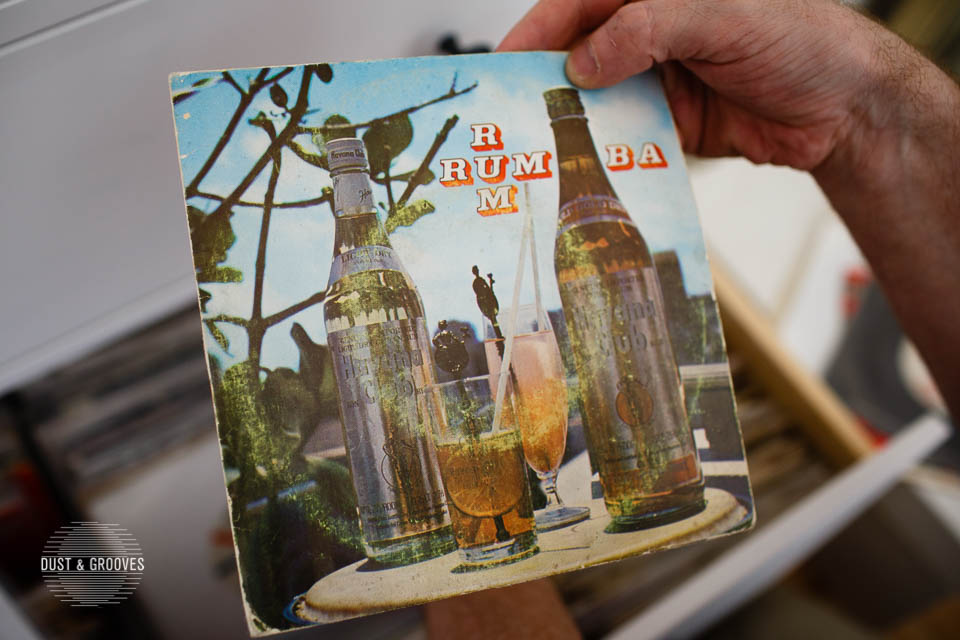 This promotional Spanish 45 put out by rum brand Havana Club was in Carlos’ house growing up; it’s an example of deep Cuban rumba, son and guaguanco.
This promotional Spanish 45 put out by rum brand Havana Club was in Carlos’ house growing up; it’s an example of deep Cuban rumba, son and guaguanco.
Since you grew up listening to a lot of house and breakbeat, how did you get into Latin soul and that sort of thing?
The other influence for me was the movies. I grew up in a small town near the mountains where the kids went to play outside or watch the typical movie you have in Spain in those years. It always impacted me a lot, the soundtracks of movies like James Bond and Dirty Harry.
I always remember the famous chase scene in Dirty Harry when you hear the flute mixing with the percussion and the bass. I probably first heard that when I was 3 or 4 years old. I didn’t know it was funk or soul, but the first time I listened to flutes and percussion there was something that caught me very fast. I remember one of the first times I was consciously listening to funk was Quincy Jones’ Ironside soundtrack.
One day when I was 14 or 15 years old, I went to a bar near my house where they had a stand where they sold mega mixes and the barman was listening to Eric Burdon and War, you know, “Spill the Wine,” and it starts with percussion and some flutes. But it’s a kind of Latin soul, and I thought “Oh my god, what the hell is that? This is what I want to hear” and that is when I started to get introduced more rhythms.
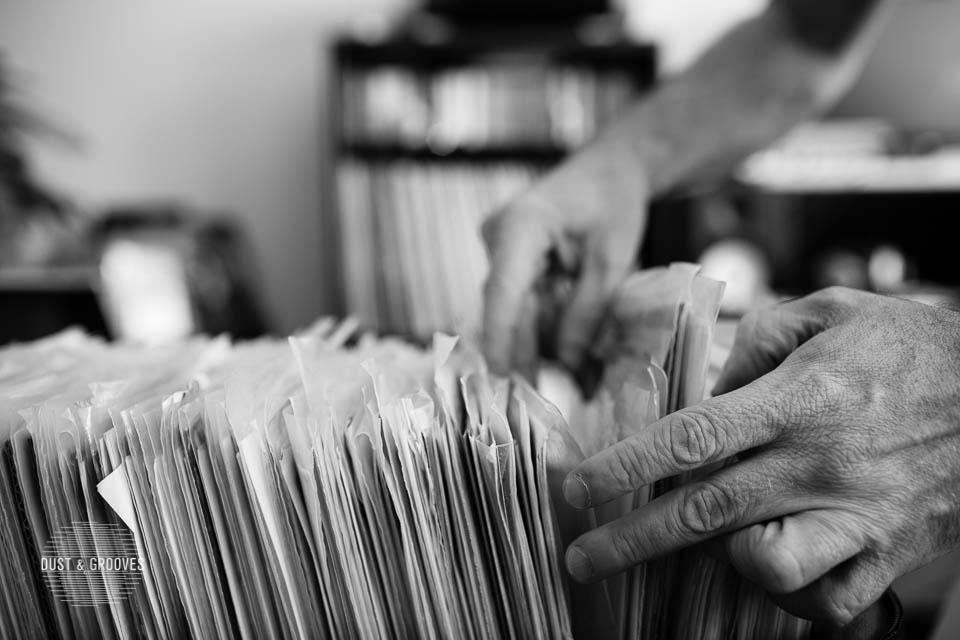
How do you define Latin soul and boogaloo?
Latin boogaloo is the best combination ever created between Latin rhythms and soul-funk sounds. As the living legend Bobby Marin says, it is “clave con soul.” It’s music to party, simple as that.
When did you first hear boogaloo?
I heard boogaloo in my home, but I didn’t know what it was because my mother had a record of La Lupe. You have “Fever” but all the other songs on 1968’s Reina De La Canción Latina were boleros.
The first time I actively listened to boogaloo was in ’95. I went to the public library and saw this section of CDs and took one compilation that was a New York City background with, like, comic letters. It was a compilation of boogaloo made by two DJs: DJ Floro and DJ Gofi from Madrid, and they made the first compilation of Latin boogaloo before the explosion. I really loved ’60s soul music, so I’m thinking that this is soul but with the Latin rhythms I always love, but in English. And I became addicted.
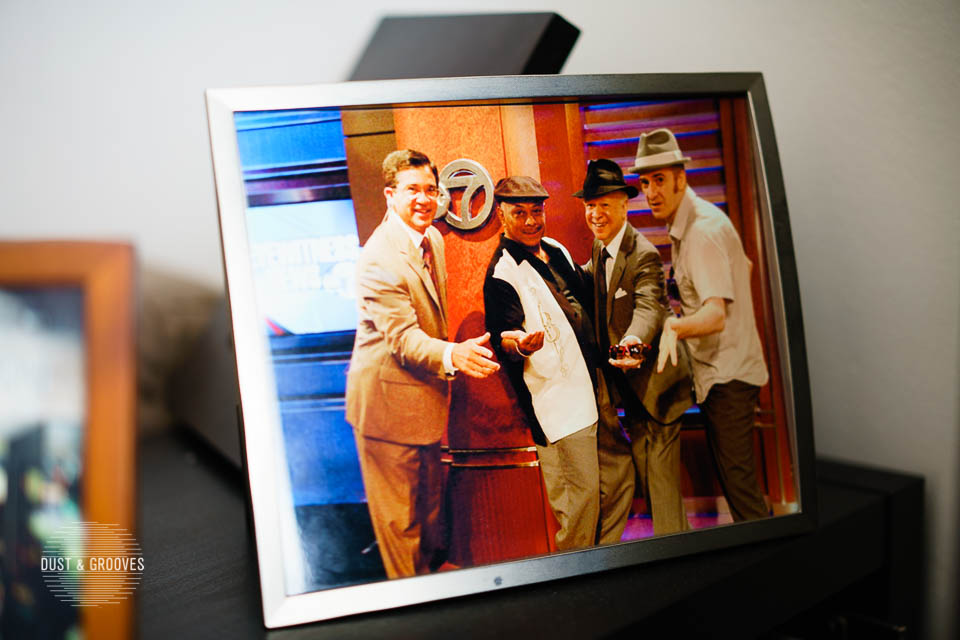 Carlos appeared with pioneers Johnny Colon (second from right) and Joe Bataan (second from left) on WABC ahead of a 2011 boogaloo SummerStage show.
Carlos appeared with pioneers Johnny Colon (second from right) and Joe Bataan (second from left) on WABC ahead of a 2011 boogaloo SummerStage show.
I think it’s really interesting that, on one hand, you grew up with this sort of broken down music in house, which is orchestrated in a totally different way. Then you had a lot more complex music with the funk, jazz and soul.
But if you think about it, for example, before I discovered boogaloo, I played Chicago house music because this is what was kind of big in Spain between ’87 and the mid to late ’90s. They had the fusion of garage music and started to add that to the house, the Chicago sound mixed with the electro and the dub and all this. When you start to look at the second names of all these DJs, in New York City especially, it’s all Puerto Ricans and Latinos. As far as house musicians from the late ’80s and early ’90s, you have Robbie Rivera, Louie Vega. Interestingly, Vega was a nephew of [boogaloo singer] Hector Lavoe!
The pioneers of house music, what they heard at their house was salsa and boogaloo, probably because it’s what their parents listened to. So I think it’s all kind of related. The breaks from the late ’80s, the old school hip-hop and songs like “Pump Up The Volume” by MARRS in England, were a kind of collage of sounds. This for me was kind of boogaloo—it was kind of the same concept. You’ll hear some Latin soul and boogaloos and it’s like a patchwork of sounds in one song. The concept was very similar for me when I heard some songs that, in three minutes, they changed the rhythms two or three times and then go back to the intro and mix it with another thing. This is the same concept as me for a DJ.
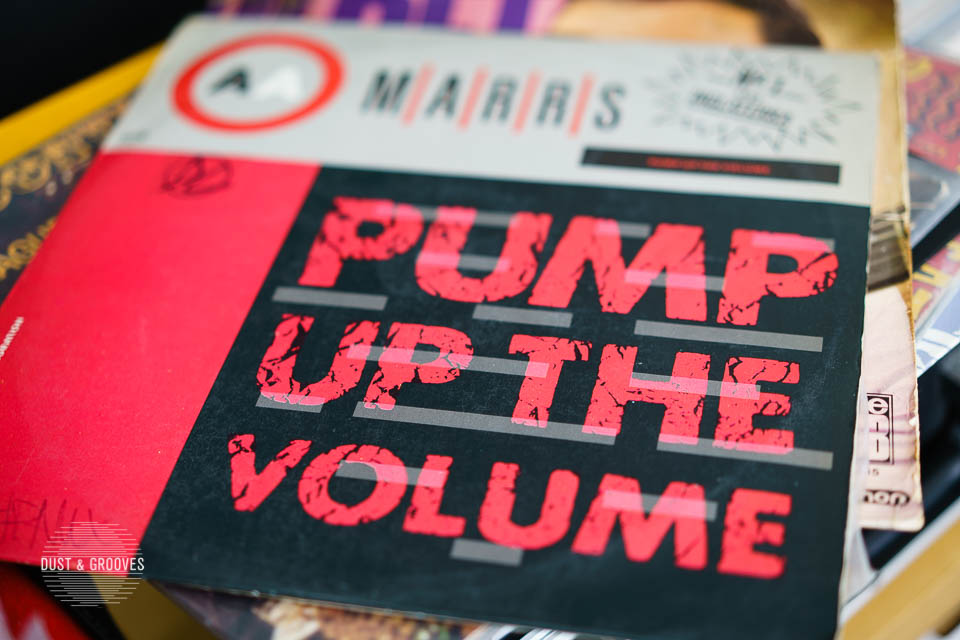 MARRS – “Pump Up The Volume” Breaks from late ‘80s groups like MARRS have offer same collage of sounds as Latin soul and boogaloo and are among Carlos’ early influences.
MARRS – “Pump Up The Volume” Breaks from late ‘80s groups like MARRS have offer same collage of sounds as Latin soul and boogaloo and are among Carlos’ early influences.
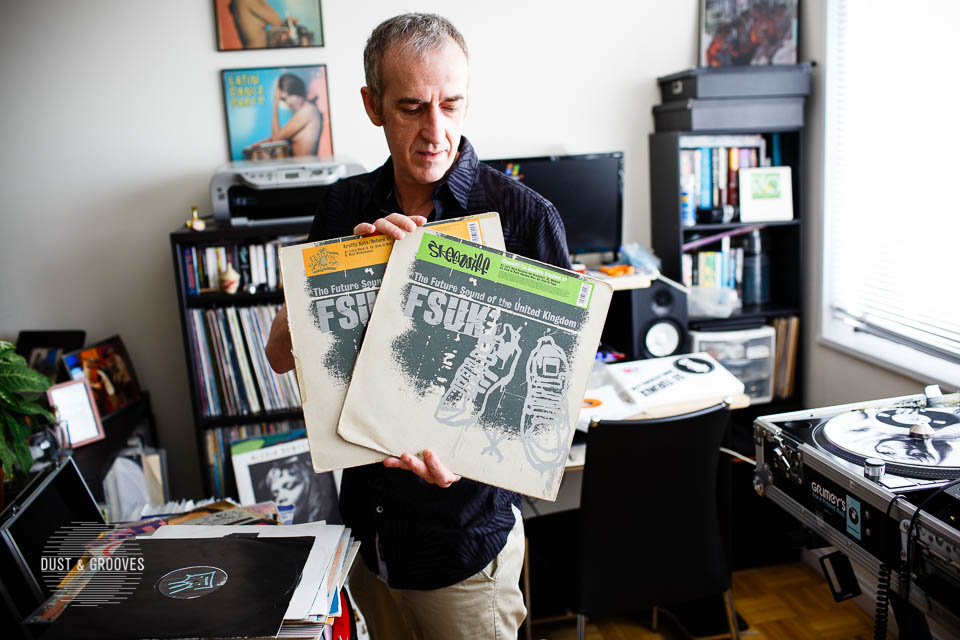 FSUK (aka The Future Sound Of The United Kingdom), an offshoot of London’s Ministry of Sound. Carlos played the FSUK series, and other similar sounds, including The Freestylers and Fatboy Slim, in the ’90s and early aughts.
FSUK (aka The Future Sound Of The United Kingdom), an offshoot of London’s Ministry of Sound. Carlos played the FSUK series, and other similar sounds, including The Freestylers and Fatboy Slim, in the ’90s and early aughts.
When you got older and started DJing professionally, what were you specializing in?
Another DJ in the radio station where I was had better skills and he taught me how to pitch. He was a progressive radio icon in Spain, David Gausa.
I was the only one of my friends who had two turntables and a mixer. We started to make raves but without knowing we were making raves. Someone had a house outside of Barcelona, and when I was 18, I went to live in this house with a recently divorced woman. We started to make crazy parties, all in vinyl. In those parities I started to play all kinds of music—electro, house, breakbeat, crossover, grunge, punk, hardcore. Everything—and I was the only DJ.
 Carlos’ turntable setup includes custom-made slipmats that show more than a bit of skin.
Carlos’ turntable setup includes custom-made slipmats that show more than a bit of skin.
Your collection must’ve been huge.
No, not really, because I had lost and sold a lot of records, but I had friends who would bring records to the party. When I started to be more independent and collect more seriously, we’d go to record shops in Barcelona. In those years, before the ’92 Olympic Games, you had one record shop after another, and I remember we’d take some LSD and go to buy records by the cover. I didn’t know what was inside.
That’s when I started to discover the psychedelic music and for 2-3 years, I listened to a lot of psychedelic music and Jimi Hendrix and all these classics. I was always open to the music and we had a group of friends who listened to different kinds of music.
In those years I had older friends who went to the first raves and listened to Prodigy and UK hardcore. I remember I had a tape of The Chemical Brothers before they became famous.
I started to focus on big beat and breakbeat, jungle drum and bass, ragga jungle. In the 5 years between ’95 and 2000, I played in all the raves and all kinds of parties for 16-17 hours on no sleep. I remember one rave in Tarragona, I played for 17 hours. There were DJs from around the world, and so they had different spaces and I played in kind of the chill out area, playing liquid funk. One of the top DJs from Amsterdam came with a huge pack of trance records and he was so drunk he couldn’t spin. I was drunk too, but I could control the turntables, and they asked me if I could play the big floor. So I did, for 17 hours with records I had never heard before. It was crazy.
As for the boogaloo, I started listening in ’95 but I didn’t start to specialize until the early 2000s.
Was it difficult for you to get boogaloo records and American music in Spain?
It was difficult, I was lucky to find records, but also I didn’t use the internet until 2001 or 2002. Everything I found is causality. I’d go to secondhand markets—for example, in Barcelona you have a kind of flea market since the ’40s or before, Los Encants, and that’s where I bought a lot of records. You’d also find Spanish copies, Latin American copies, American copies from tourists.
When I would discover things, I’d look at the label and I looked at the producer. If another record had the same producer, it’ll probably be a good sound too. But I never paid so much attention to names and all the background of the record. I listen to the record, I like it, I think the people will like it, I buy it and I play it. I wasn’t a musicologist or journalist.
Also when we talk about boogaloo, that’s so narrow. A boogaloo band wouldn’t just play boogaloos, they’d play everything.
Yeah, boogaloo was kind of the concept, almost like a modern dance for Latin bands. Latin bands started to lose audiences because of The Beatles and Motown, this is why they started to mix Latin rhythms and create boogaloo.
But now you’re a resident boogaloo expert.
I never expected that when I came here. I love boogaloo and when I came to New York I became the only one in the city specializing in boogaloo. You’d have mod parties and they play northern soul, some reggae and some boogaloo, but I was the only one who could make a 3 hour set of all boogaloo.
I was very lucky because I came without any special plans. I sold everything in Barcelona, I sold a lot of records that I’ll regret all my life. I sold a collection of 1,500 tapes, all my mega mixes. I sold comics, I sold everything to come here with enough money to start a new life.
What do you most regret selling?
I sold around 100 records of house music, garage-house music. I had a lot of records that were the roots of house music. Oh my god, I want to cry, especially this kind of collection because I had a lot of Latin-influenced post disco things that you considered house music before house music was. I sold 45s of funk and soul thinking that it was more mainstream now. I kept the boogaloo, of course.
You came to NYC in 2008, which in my estimation is about 2 years before boogaloo hit again. Was it easy to find records here? Were people receptive?
No, especially not 45s. I started to buy LPs and things like that here, things I can’t buy in Spain. When I came here, I started to focus more seriously on ’60s Latin soul and boogaloo because you don’t have as many people who know about that. In Spain and the UK, you have a few record labels—Harmless, Strut, Soul Jazz and Vampisoul—that made serious compilations of Latin soul and boogaloo with liner notes that are very helpful.
When I came here, I thought The Big Apple had all the Latin soul and boogaloo and things like that, but no, nothing! I said, where are all the parties? I started looking on Facebook, Myspace, everywhere. So I proposed my first party at Nublu. I made a party for myself with no expectations.
In 2005/6 I opened my eBay account and that opened a new world for me. And Discogs, I was one of the first people to open an account on Discogs. And that’s when I started to get in contact with sellers from Mexico and Colombia and Peru and started to buy a lot of stuff. The “Danzon Boogaloo” is one of those Peruvian copies. It’s very hard to find and the only one cut on 45. Richie Ray did an excellent version.
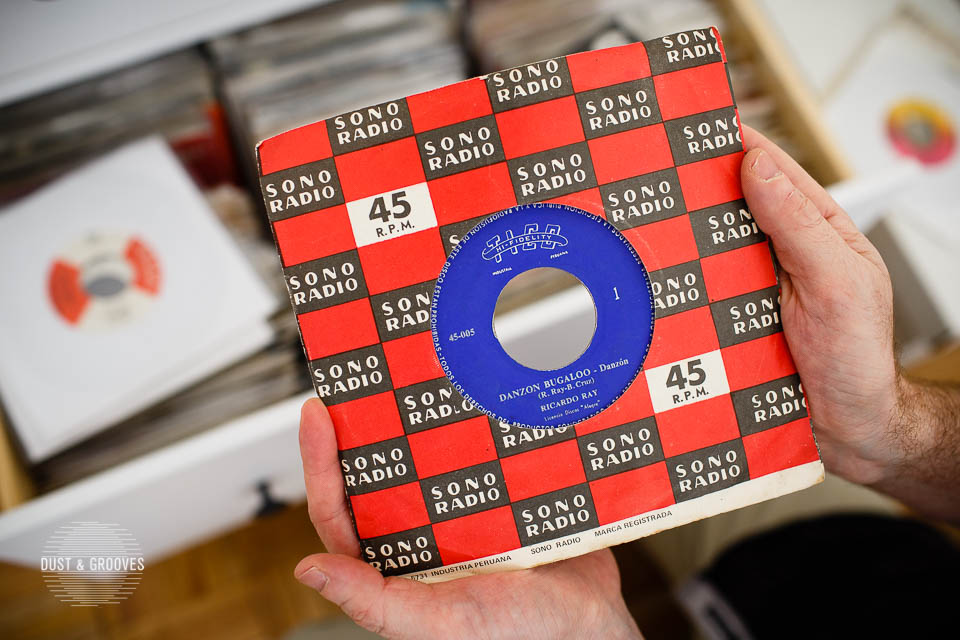 Danzon – “Danzon Boogaloo” A Peruvian edition of a semi-instrumental boogaloo tune, this record has a touch of Cuban danzon and some psychedelic vocals for a unique boogaloo rhythm.
Danzon – “Danzon Boogaloo” A Peruvian edition of a semi-instrumental boogaloo tune, this record has a touch of Cuban danzon and some psychedelic vocals for a unique boogaloo rhythm.
Also Pablo Yglesias, DJ Bongohead. He is the master of all these compilations and has so much knowledge. I met him in 2011 and started to invite him to my party; he opened my mind to other styles that I was very closed to—the cumbia and all this stuff.
But then there was this boogaloo and Latin soul renaissance over the past 7 years or so. How did you contribute?
Between 2008 and 2014/15, I was really, like, in a cloud. I remember when I met Pete Rodriguez at one party in Spanish Harlem and he came to me with his wife to say thank you! It’s wow.
I almost cried in the moment when we put together a 2015 boogaloo celebration in Lincoln Center with Ray Lugo and legends Richie Ray and Pete Rodriguez and Joe Bataan. Pete Rodriguez was on stage and he was crying because he did not expect to have 10,000 people listening to the music. I think it was very special for these people and I’m very, very honored to be part of this thing. But these things only happen in America, it’s kind of the American dream—I came without the intention of all this. Now, I’m working for Fania and working remixes now, and I don’t do the boogaloo party anymore.
I’ve noticed there’s a lot of reissue boogaloo LPs in recent years.
Sometimes I prefer to buy a reissue because if I have the original, I have only one copy, and it’s a risk to play it.
I’m also very selective with my records. Sometimes you buy everything you like and that’s it—until I realized that I have no space. I also realized it’s kind of stupid to focus on so much and not focus on what you have. I still play house music and all this but more in digital format.
I’m still collecting boogaloo but I became very, very, very selective. So if one song is a very hard to find 45 and it’s a very rare edition and the song isn’t 100% my style or doesn’t work on the dancefloor, I don’t buy that. Because why would I want to have something that I’m going to play only at my house or only for other record collectors? I focus on only things that I will play and only things that really work in the dance floor.
This song, Goody Oswaldo “I’m gonna have my fun” is always very popular with dancers. Another example of this is “Bailamos Boogaloo” by The Golden Boys of Panama. I love the lyrics in Spanish talking about dancing boogaloo, being united, very happy-hippie-flower child lyrics.
So I don’t have a big collection. Of boogaloo, maybe 1,000-1,100 records.
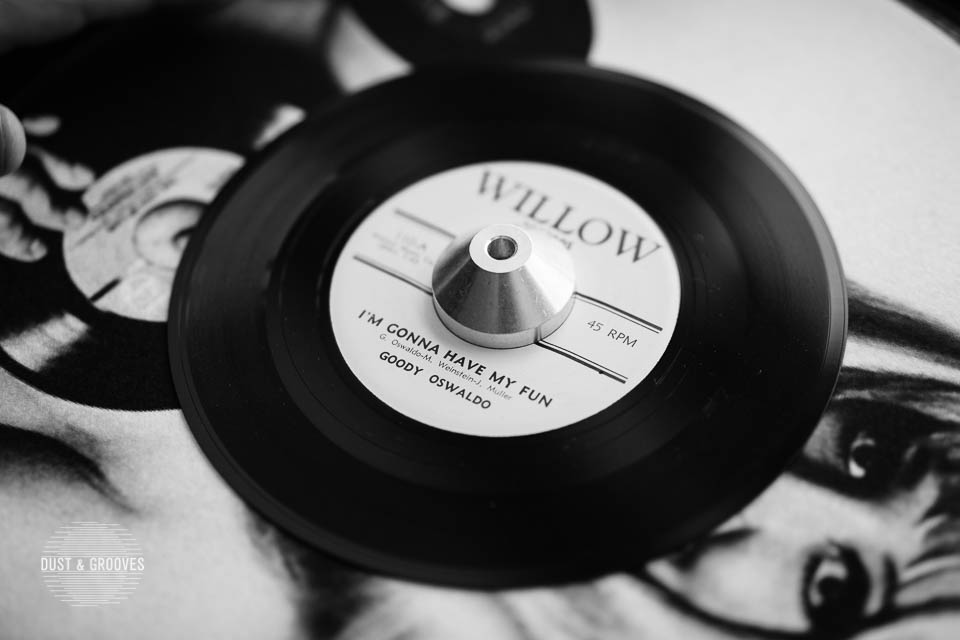 Goody Oswaldo – “I’m gonna have my fun”
Goody Oswaldo – “I’m gonna have my fun”
Are there any records that you’re really proud of or were big gets for you?
Every record is like my son, but I’m proud of my boogaloo 45s. The thing is, during the ’60s this was big here, but in France and some countries in Europe, boogaloo came later—’72, ’73, ’74 is when you start to see a lot of copies like that with a photo cover.
This Johnny Zamot is one boogaloo hit that’s always in my set. That 45 is very, very, very hard to find and today costs much more than when I found it 15 years ago. The only copy I have; I was afraid to take the photo! That song is written by Mark Weinstein, a Jewish musician who collaborated with many musicians. Now he plays jazz, maybe he’s around 80-something. I remember I talked with him on Facebook one day and he said that the most soulful songs of Johnny Zamot were composed by him, according to him. I heard other boogaloos from Johnny at the time and think it sounds totally different than all the other boogaloos. He has a very, very different sound because he was on Decca as opposed to the other labels like Fania. It’s a little underground.
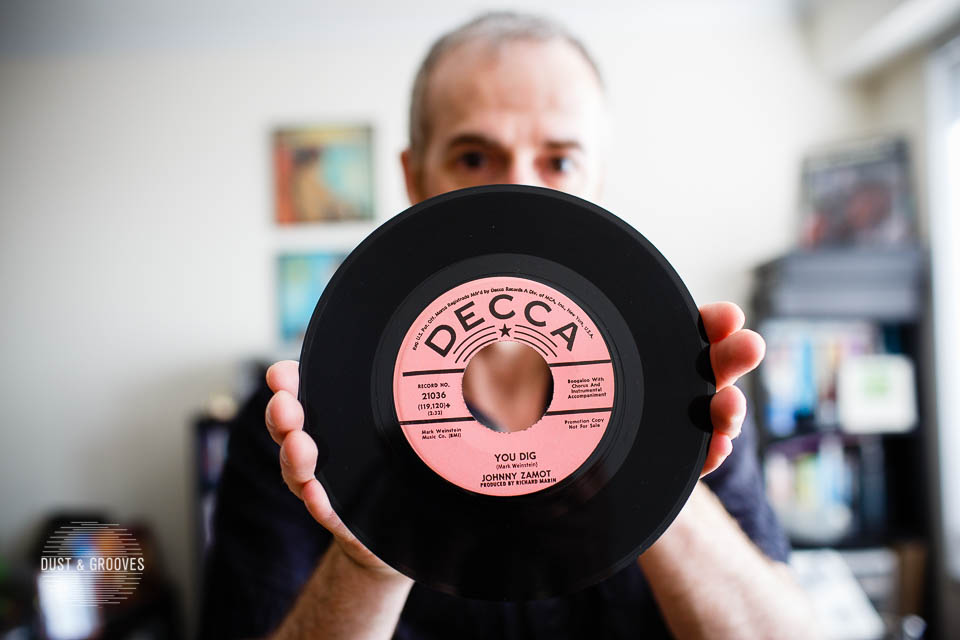 Johnny Zamot – “You Dig” Produced by Latin soul/boogaloo pioneer Richard “Bobby” Marin. Decca isn’t typically associated with this sound.
Johnny Zamot – “You Dig” Produced by Latin soul/boogaloo pioneer Richard “Bobby” Marin. Decca isn’t typically associated with this sound.
I’m also proud of my golden Fania labels—of course I could have more of Fania—but not all of it sounds good. Joe Bataan’s “Gypsy Woman,” this is one of the top, especially because it’s in mint condition.
 Joe Bataan – “Gypsy Woman” One of Carlos’ prized golden Fania labels is in mint condition and a favorite tune.
Joe Bataan – “Gypsy Woman” One of Carlos’ prized golden Fania labels is in mint condition and a favorite tune.
Boogaloo’s gone all over the world too, right? There’s even a Japanese band that does boogaloo songs.
Yes, there’s a label called Big Bad Records that put out a compilation of French West Indian boogaloos. I have a single from the ‘60s off that compilation. Discogs has been very helpful for learning about stuff like this. It seems like more people are putting out boogaloo compilations right now, two months ago you didn’t have all this and now, if you go online you can find two French West Indies albums.
I really love The Boogaloo Assassins’ version of that song. I think that one was the first version I heard.
Yeah, they’re amazing.
I got to see them recently, but the other modern boogaloo band I like is Fulaso. You actually introduced me to them when we spoke for Noisey.
Yes, I have their latest too. The cover of the 45 was created by Bongohead, you know? They’re good and the singer, Erica, is unique because there are very few female voices in boogaloo. Dianne & Carole With The Latin Whatchamacallits, they did the song “The Fuzz,” and are another of the few female boogaloo singers.
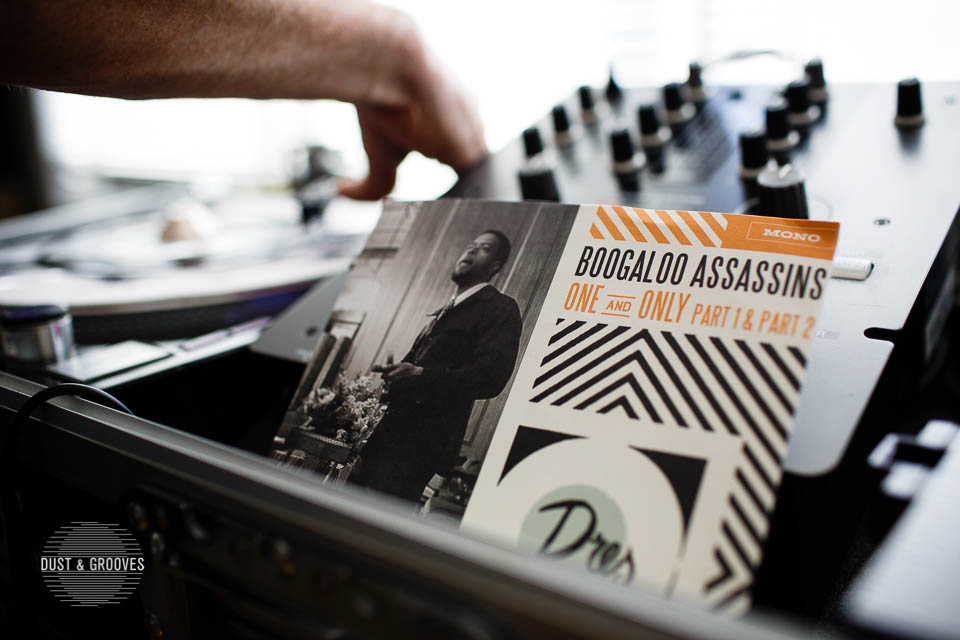 Boogaloo Assassins – “One and Only Part 1 & 2” Carlos has opened for Los Angeles-based Boogaloo Assassins, one of a handful of modern groups bringing back the Latin soul and boogaloo sound.
Boogaloo Assassins – “One and Only Part 1 & 2” Carlos has opened for Los Angeles-based Boogaloo Assassins, one of a handful of modern groups bringing back the Latin soul and boogaloo sound.
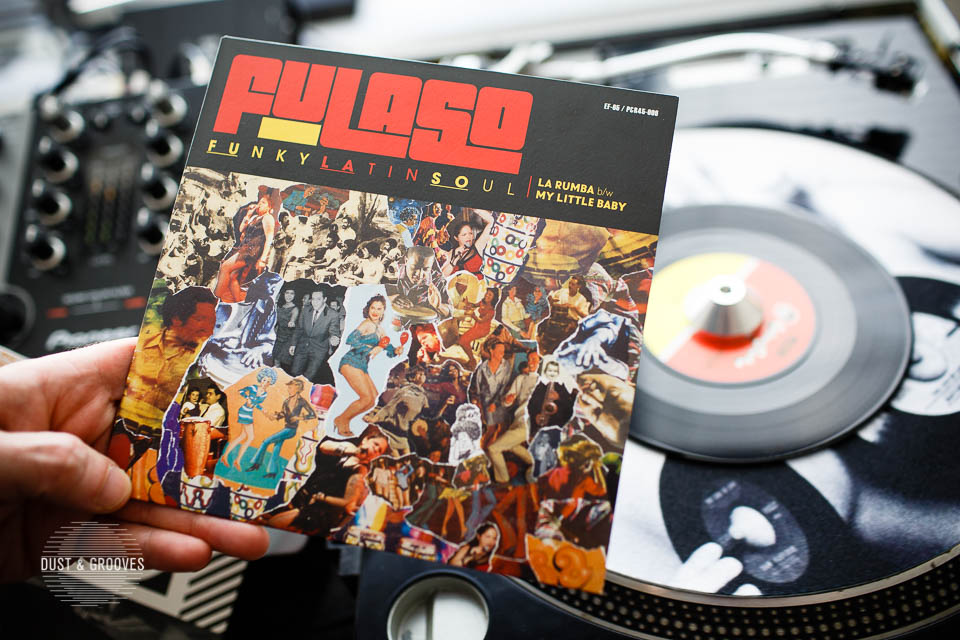 Fulaso – “La Rumba b/w My Little Baby” NYC-based Fulaso are a modern 10-piece band focused on Latin soul and boogaloo. The album art was done by Pablo “Bongohead” Yglesias.
Fulaso – “La Rumba b/w My Little Baby” NYC-based Fulaso are a modern 10-piece band focused on Latin soul and boogaloo. The album art was done by Pablo “Bongohead” Yglesias.
I didn’t see many 45s the last time I visited Barcelona. I saw a lot of LPs and I had this idea that was the culture.
What you see now is like the classic record shops that are still open, they adapted to the market. When I grew up in the ’70s and early ’80s, all the record shops had 45s.
In Spain you have a cover or one photo that is maybe not the official photo of the album and the back you have the lyrics translated in Spanish. When I show some copies of records, for example records of boogaloo or salsa from the ’70s, some record collectors here say wow.
 Spanish releases of American bands, such as these Ray Barretto records, typically had picture sleeves with Spanish translated lyrics.
Spanish releases of American bands, such as these Ray Barretto records, typically had picture sleeves with Spanish translated lyrics.
What are your favorite local record shops?
My favorite record shops are A-1 Records, that’s my No. 1 record shop. You have The Thing in Brooklyn but boogaloo is so hard to find in New York City. You have also flea markets. My experience with record collecting is another kind of American story.
I was with my wife having brunch on Saturday morning and I received a call. I didn’t recognize the number so I let him leave a message. And the voice was like a kind of ’70s old school record dealer from Kojak City or something like that. He says, “Hey Carlos! A friend of mine gave me your phone. I have more than 1,000 45s, I’m selling the records in the church on 14th Street and 1st Avenue, so if you’re gonna come, come tomorrow. I’ll be there all day.”
So I went there and it was a benefit stand for the church or whatever. He was old school New York, a very funny guy, and he had tons of 45s that were not organized or anything. I grabbed all kinds of disco boogie and breaks and, oh my god, promo copies from radio stations in 1980, 1981, 1982! Some of them were very hard to listen to, some were very good.
I started to look at another box and found promo copies for popular Latin soul/boogaloo labels Cotique and Tico and Fania! I said oh my god this can only happen here! I found a Joey Pastrana 45 of “Cry Back,” which always I tried to look for this online but it was in a box in front of a church in the Lower East Side!
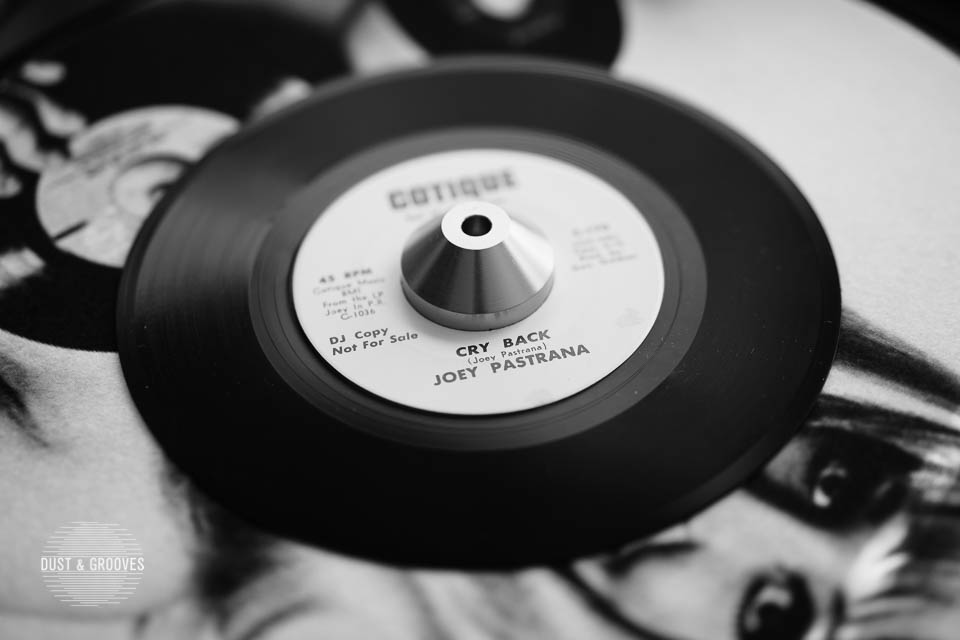 Joey Pastrana – “Cry Back”
Joey Pastrana – “Cry Back”
It’s hard to find 45s, especially since the boogaloo came with a sort of resurgence. They’re more expensive right now. I sold a lot in the last years, so I focus on only what I need, only what I really love. I only buy things in good condition.
But there are records that will always be with me. Records that are memories.
Can you show me?
Pata Negra is one—it is always with me. It’s the brothers Amador, they started to mix blues with flamenco and rumba. The lyrics on this record are pure poetry.
They grew up in the same context as boogaloo. In Seville, Madrid and other Spanish cities, there’s a community of gypsies who started to mix flamenco rhythms with other styles for the tourists. A lot of musicians in Seville had that gypsy influence and would play for tourists on the Costa Brava, doing covers of The Eagles and things like that.
 Pata Negra – Blues De La Frontera. One of Carlos’ comfort records, this 1987 album “is always was with me for its poetic lyrics and unique melding of blues, flamenco and rumba.”
Pata Negra – Blues De La Frontera. One of Carlos’ comfort records, this 1987 album “is always was with me for its poetic lyrics and unique melding of blues, flamenco and rumba.”
The result was the explosion of rumba Catalan, with its fusion of rumba flamenca with soul and funk. In the late ’60s and early ’70s in Spain, it was kind of similar to the history of boogaloo and created the same controversy between purists and young ones. Gypsy young musicians were mixing modern styles with classic flamenco sounds. Los Chichos were representatives of this sound in the ’70s, creating hot songs with a very powerful message about party, life in the ghetto, social situations and drugs.
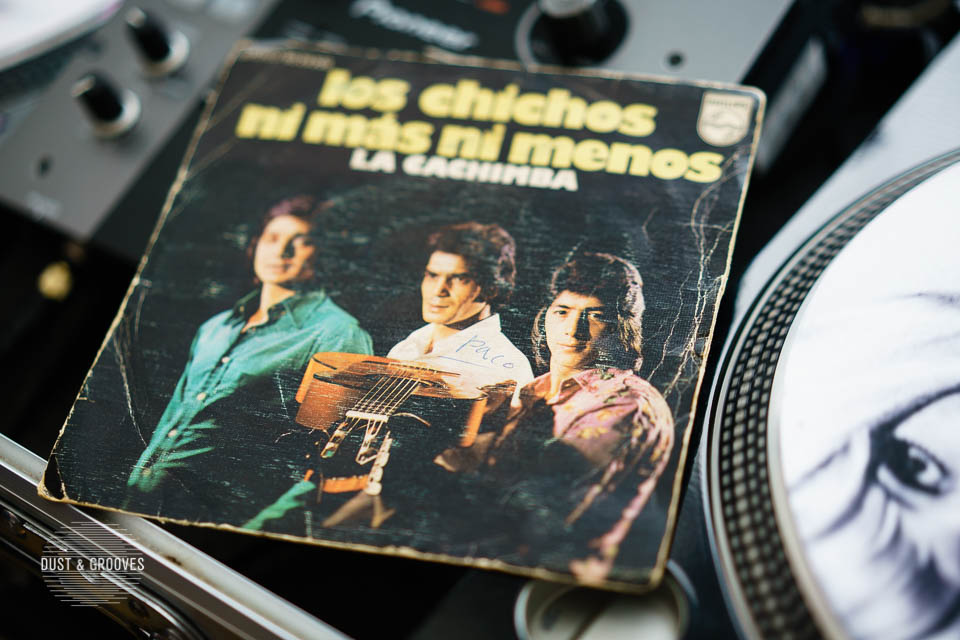 Los Chichos – “Ni más ni Menos” In the late ’60s and early ’70s, Spain saw an explosion of rumba Catalan, which fused rumba flamenca with soul and funk music to create a boogaloo-like mashup of old and new styles.
Los Chichos – “Ni más ni Menos” In the late ’60s and early ’70s, Spain saw an explosion of rumba Catalan, which fused rumba flamenca with soul and funk music to create a boogaloo-like mashup of old and new styles. Peret – “Una Lagrima / Lo Mato / Gato / Siempre” (1967)
Peret – “Una Lagrima / Lo Mato / Gato / Siempre” (1967)
Do you have any other memorable collecting moments?
I think I should check my YouTube comments more because I got this comment and an email from a guy:
Hi Carlos, sorry to bother you my name is Michael Vargas. I saw that a couple years ago you posted a YouTube video with a song by Los Continentales with a link to your boogaloo party. My dad Carlos Vargas was a member of Los Continentales in Cuba, he was the bassist from the group and one of the singers. He passed away a couple years ago and I’ve been trying to track down some of his music. I was wondering if you perchance happened to have a copy of the full album In Malaguena.
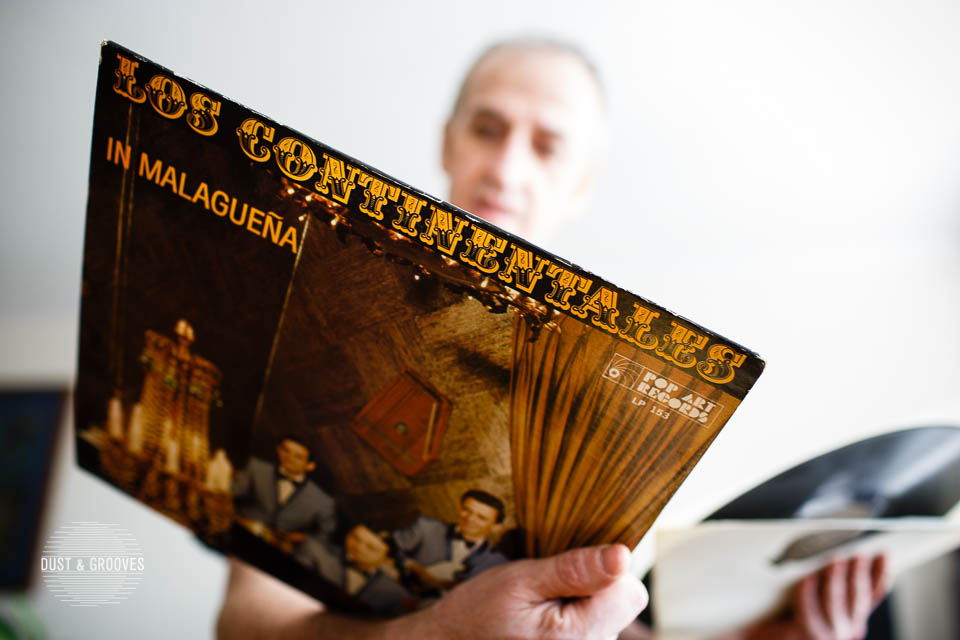 Los Continentales – In Malaguena This “sinister and creepy” looking Cuban record caught the ear of a fan on YouTube, whose father was the bassist.
Los Continentales – In Malaguena This “sinister and creepy” looking Cuban record caught the ear of a fan on YouTube, whose father was the bassist.
Wow. He’s been trying to track it down for a while and can’t find it. He’s a big music lover but he doesn’t wish to deprive you of any of your music, particularly if you have the original vinyl pressing. Do you have a copy?
I wrote back the same day that I have one copy and it’s super hard to find. Pablo Yglesias, who has the biggest Latin collection in this country, didn’t hear about this album. He never saw it. The cover is designed by Izzi Sanabria and when I showed it to him some years ago he said he forgot. Nobody knew anything about this record! I paid $20 for this record on eBay and I ripped it to send to this guy. The cover is in the lobby of a hotel in Miami, it’s kind of creepy, sinister. I consider this the rarest boogaloo album in my collection.
What about that record appealed to you?
Because I didn’t know it and I didn’t have a sample, I bought it without listening. I turned it over and saw boogaloo boogaloo boogaloo [song tracks] and I took it. I was looking for Latin covers of Brazilian music to make a podcast. I was looking for covers of bossa nova made by Latin bands.
To me, this sounds like an early ’60s American band but pitched out and a little bit faster.
Yeah, it’s like a watusi. In the early ’60s, when you had the surf thing, a lot of Latin musicians in California started to mix that with Latin music to make the watusi. Right after the watusi is when you have the Motown sound and The Beatles. There is a transition of 1-2 years before the boogaloo starts.
But this is the kind of message that sometimes happens on YouTube. Another one came from a Mexican musician that was the drummer for Willy Marambio who’s a Peruvian trumpeter who only did one tour in the USA and I have a very, very rare record of him that was before the boogaloo—the watusi sound, a mix of rock‘n’roll and Latin music. The drummer of that tour wrote me on YouTube and told me all these stories.
Another collecting story: The Chakachas were a studio band and they never played live, that’s why they contacted Harvey Averne in the US to make the “Jungle Fever” hit.
The album that they brought to show Harvey was this one, an instrumental, and he gave it to me. You can consider this a kind of rumba catalan. This copy was from Belgium.
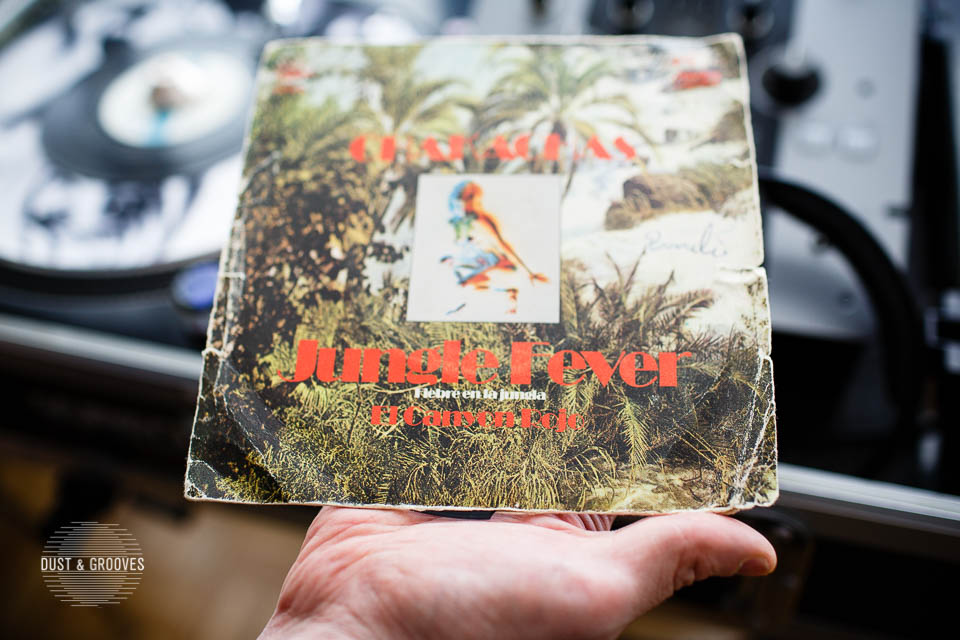 The Chakachas – “Jungle Fever” produced by Harvey Averne.
The Chakachas – “Jungle Fever” produced by Harvey Averne.
I think it’s amazing too that all of these guys exist in the world. They go out to see people perform and whatnot.
I played The Coasters’ “Cool Jerk” at Union Pool in Brooklyn and up comes Larry Harlow of Fania fame, and he looks at the record and said, “Oh, I forgot I recorded that.” I have the photo of the moment.
I was very lucky to meet all these legends. I met Harvey Averne and Pete Rodriguez and I never expected to meet these legends. And these legends knew about my party or about my YouTube channel and like, wow. It seems like I rescued this sound, which wasn’t my intention. But I also didn’t know that the sound was forgotten among the community.
Harvey doesn’t go out so much anymore but he would come to my parties every night, introduce me to people.
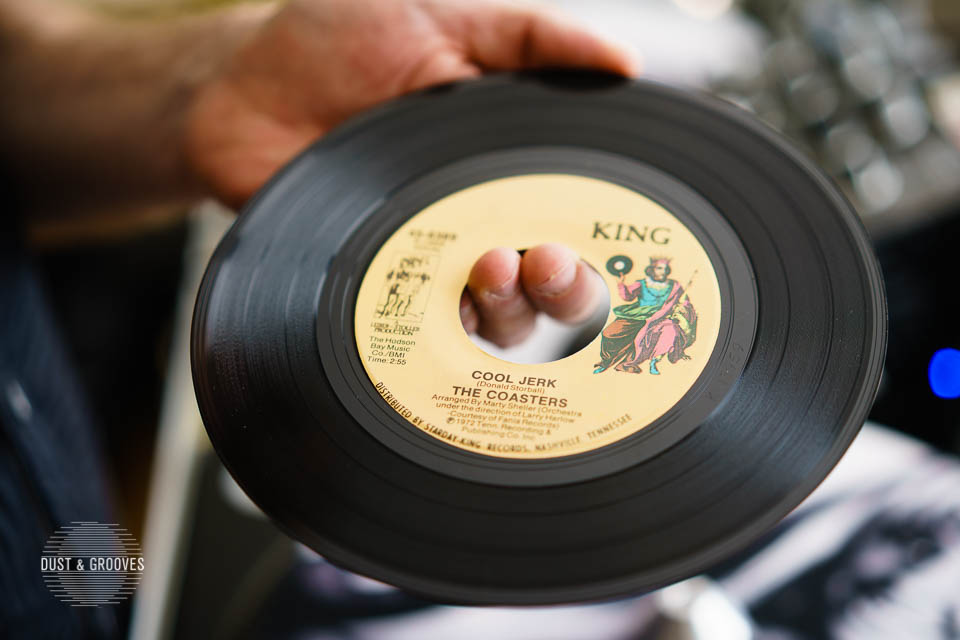 The Coasters – “Cool Jerk” This super-rare 45 isn’t a great song, Carlos admits, but it’s a dancefloor hit orchestrated by Larry Harlow.
The Coasters – “Cool Jerk” This super-rare 45 isn’t a great song, Carlos admits, but it’s a dancefloor hit orchestrated by Larry Harlow.
How did you meet Harvey?
Through musician/producer Bobby Marin. He came up to me at the SummerStage concert and said hey do you know Harvey Averne? He wants to know you. So he came to my party and we became friends.
Until he met me, he didn’t know that people were spending 1,500 euros on “Never Learned To Dance” 45. He said in 2004 he trashed a full box with 150 copies of this single! He sold all the records in the ’80s because he was a cab driver in New York City.
What’s next for you?
Some of the bands in the Caribbean did some covers of the boogaloo, so I wanted to try to go to the Bahamas and see, before the hurricanes destroyed everything. I have a friend who lives there and has a little cabana in the Dominican Republic, I think I can do a chill out there and spend couple days in Bahamas and see if I can find some old school radio stations—sometimes they sell their collections.
Check out more boogaloo action:
Please consider purchasing the Dust & Grooves book and continue your support of the Dust & Grooves project.

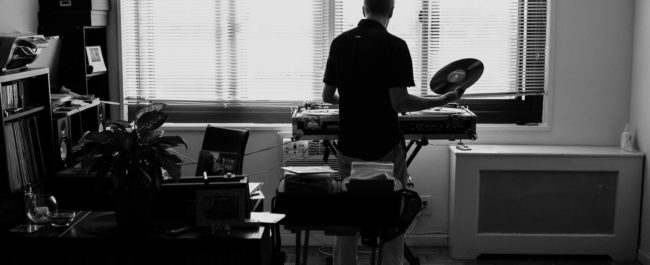

Thanks for these interviews! They’re a lot of fun, especially when it’s about such a niche genre. Small correction for Mr. Vera though. The Chakachas did perform live, as the album What A Night With The Chakachas can attest, which was a recording in the Casino of Knokke, Belgium, where RCA put one of their live concerts on vinyl.
Pingback : Who Owns 'Boogaloo'? | Georgia Public Broadcasting
Pingback : Who Owns 'Boogaloo'? - Headline Booking Group